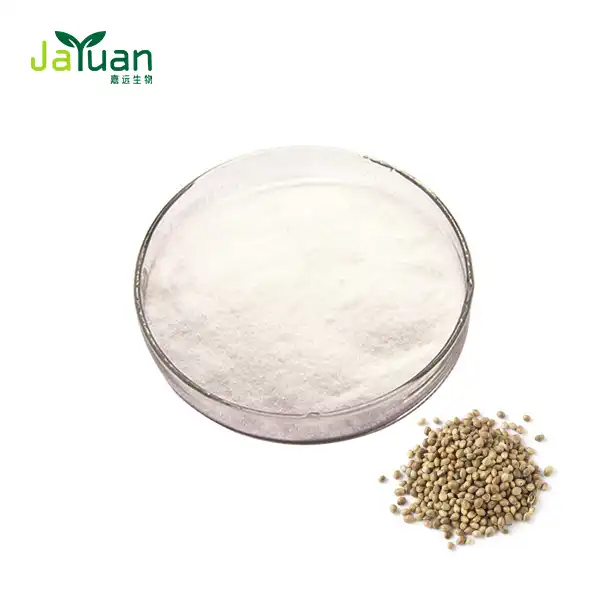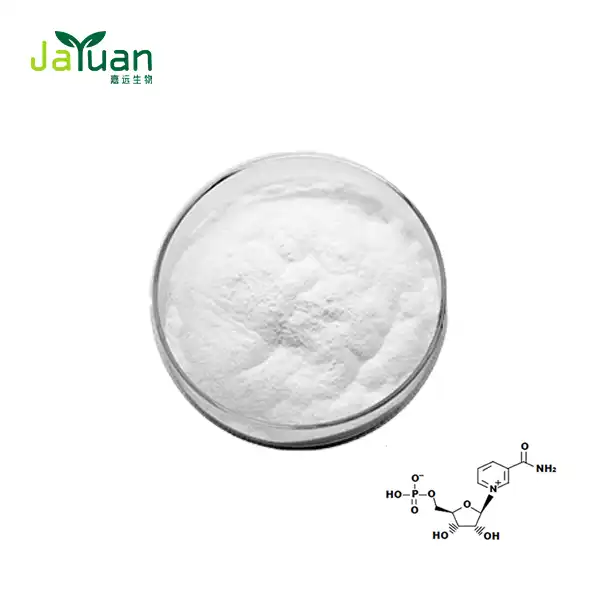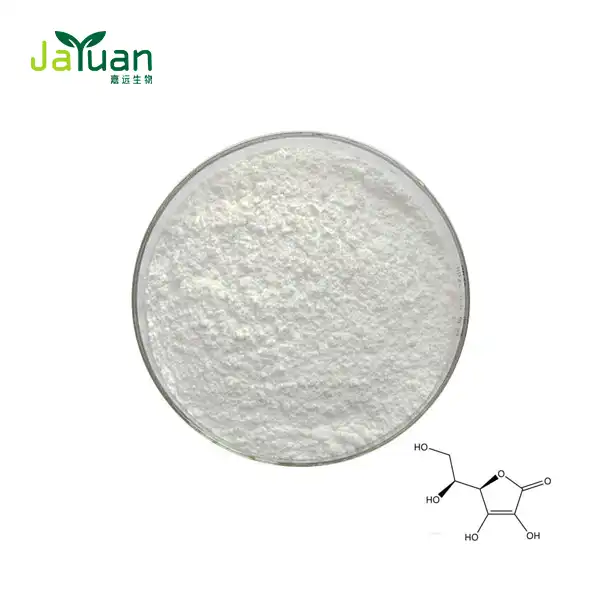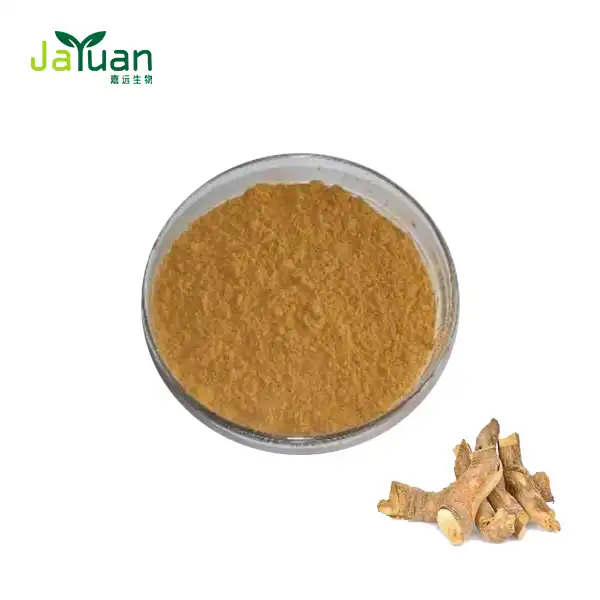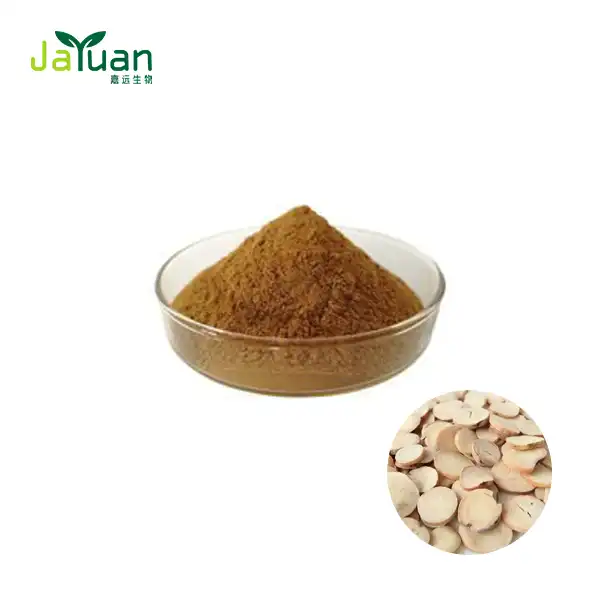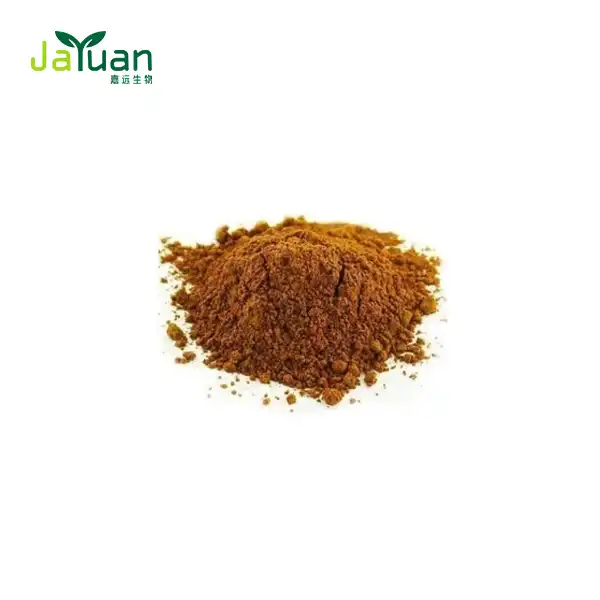How do notoginseng saponins interact with drug metabolism?
Notoginseng saponins, derived from the Panax notoginseng plant, have garnered significant attention in the realm of natural health supplements. These bioactive compounds are renowned for their potential health-promoting properties. However, as with any supplement, it's crucial to understand how they may interact with various medications and affect drug metabolism. In this comprehensive exploration, we'll delve into the intricate relationship between notoginseng saponins and drug metabolism, shedding light on potential interactions and considerations for those incorporating these compounds into their wellness routines.

CYP450 Enzymes: Notoginseng's Effects on Pharmaceutical Metabolism
The cytochrome P450 (CYP450) enzyme system plays a pivotal role in drug metabolism within the human body. This complex network of enzymes is responsible for breaking down various substances, including medications and natural compounds. Notoginseng saponins have been observed to interact with several CYP450 enzymes, potentially influencing the metabolism of certain drugs.
Research has indicated that notoginseng saponins powder may modulate the activity of specific CYP450 enzymes, particularly CYP3A4, CYP2C9, and CYP2E1. These enzymes are involved in the metabolism of a wide range of medications, including:
- Statins for cholesterol management
- Certain antidepressants
- Some anti-anxiety medications
- Various pain relievers
The modulation of these enzymes by product could potentially lead to altered drug concentrations in the bloodstream. In some cases, this may result in enhanced or diminished effects of certain medications. For instance, if product inhibit CYP3A4, it could lead to increased blood levels of drugs metabolized by this enzyme, potentially amplifying their effects or side effects.
It's worth noting that the extent of these interactions can vary based on factors such as:
- The specific notoginseng saponin composition
- Individual genetic variations in CYP450 enzymes
- Dosage and duration of notoginseng saponin consumption
- Concurrent use of other substances that affect CYP450 enzymes
Given these potential interactions, it's imperative for individuals taking medications to consult with healthcare professionals before incorporating notoginseng saponins into their regimen. This precautionary measure can help mitigate the risk of unintended drug interactions and ensure optimal therapeutic outcomes.
Potential Drug Interactions with Anticoagulants and Antiplatelet Medications
One area of particular concern regarding product and drug interactions is their potential effect on blood-thinning medications. Notoginseng has traditionally been used for its blood-flow promoting properties, which may complement or conflict with the action of anticoagulant and antiplatelet drugs.
Notoginseng saponins have been observed to possess antiplatelet and antithrombotic properties. While these effects may be beneficial in some contexts, they can potentially interact with medications such as:
- Warfarin
- Heparin
- Aspirin
- Clopidogrel
The combined use of notoginseng saponins with these medications may lead to an additive effect on blood thinning, potentially increasing the risk of bleeding or bruising. This interaction is particularly crucial for individuals with pre-existing bleeding disorders or those scheduled for surgical procedures.
Research has suggested that notoginseng saponins may influence the pharmacodynamics of warfarin, a commonly prescribed anticoagulant. This interaction could potentially alter the International Normalized Ratio (INR), a measure used to monitor the effectiveness of anticoagulant therapy. Fluctuations in INR values could lead to either increased bleeding risk or reduced anticoagulant efficacy, underscoring the importance of close monitoring for patients using both substances.
It's important to note that the extent and clinical significance of these interactions can vary based on several factors:
- The specific composition and concentration of notoginseng saponins used
- Individual patient characteristics, including age, health status, and genetic factors
- Dosage and duration of both notoginseng saponin supplementation and anticoagulant therapy
- Presence of other medications or supplements that may affect blood coagulation
Given these potential interactions, individuals taking anticoagulant or antiplatelet medications should exercise caution when considering the use of notoginseng saponins. It's advisable to:
- Consult with a healthcare provider before starting or adjusting notoginseng saponin supplementation
- Inform all healthcare providers about the use of notoginseng saponins, especially before any surgical procedures
- Monitor for signs of increased bleeding or bruising
- Adhere to regular blood tests and follow-ups as recommended by healthcare professionals
By taking these precautions, individuals can help minimize the risk of adverse interactions while potentially benefiting from the health-promoting properties of product.

Pharmacokinetic Studies: Notoginseng's Absorption and Distribution Patterns
Understanding the pharmacokinetics of notoginseng saponins is crucial for predicting potential drug interactions and optimizing their use as health supplements. Pharmacokinetic studies focus on how the body processes these compounds, including their absorption, distribution, metabolism, and excretion.
Research into the absorption of notoginseng saponins has revealed several interesting findings:
- Oral Bioavailability: Many notoginseng saponins have relatively low oral bioavailability due to their large molecular size and poor lipid solubility. This means that only a fraction of the ingested saponins may reach the systemic circulation intact.
- Intestinal Absorption: Some notoginseng saponins undergo biotransformation by intestinal bacteria before absorption. This process can alter their chemical structure and potentially their biological activity.
- Time to Peak Concentration: Studies have shown that different notoginseng saponins reach their peak plasma concentrations at varying times after oral administration, typically ranging from 0.5 to 2 hours.
The distribution patterns of notoginseng saponins within the body have also been a subject of investigation:
- Tissue Distribution: After absorption, notoginseng saponins have been detected in various tissues, including the liver, kidneys, and brain. This wide distribution suggests potential systemic effects.
- Blood-Brain Barrier: Some notoginseng saponins have demonstrated the ability to cross the blood-brain barrier, which may explain their reported effects on the central nervous system.
- Protein Binding: Certain notoginseng saponins exhibit high protein binding in plasma, which can influence their distribution and potential interactions with other drugs.
The metabolism of notoginseng saponins involves several pathways:
- Hepatic Metabolism: The liver plays a significant role in metabolizing notoginseng saponins, primarily through phase I and phase II reactions.
- Intestinal Metabolism: As mentioned earlier, intestinal bacteria can metabolize some notoginseng saponins, potentially altering their bioavailability and biological activity.
- Metabolic Pathways: Common metabolic processes for notoginseng saponins include deglycosylation, oxidation, and conjugation reactions.
Excretion of notoginseng saponins and their metabolites occurs through various routes:
- Renal Excretion: A significant portion of notoginseng saponins and their metabolites are eliminated through the kidneys and excreted in urine.
- Biliary Excretion: Some notoginseng saponins undergo biliary excretion and are eliminated in feces.
- Enterohepatic Circulation: Certain notoginseng saponins may undergo enterohepatic circulation, which can prolong their presence in the body.
These pharmacokinetic characteristics have important implications for potential drug interactions:
- Competition for Absorption: Notoginseng saponins may compete with certain drugs for absorption in the gastrointestinal tract, potentially affecting the bioavailability of both substances.
- Enzyme Induction or Inhibition: As discussed earlier, notoginseng saponins can modulate CYP450 enzymes, which may affect the metabolism of various drugs.
- Protein Binding Displacement: The high protein binding of some product could potentially displace other drugs from plasma proteins, altering their free concentrations and effects.
- Altered Elimination: Interactions at the level of renal or biliary excretion could affect the elimination of certain drugs when used concurrently with notoginseng saponins.
Understanding these pharmacokinetic properties is essential for predicting and managing potential drug interactions involving notoginseng saponins. It underscores the importance of considering individual variability and the specific composition of notoginseng saponin products when evaluating their potential effects on drug metabolism.
In conclusion, the intricate interactions between product and drug metabolism highlight the complexity of using natural supplements alongside conventional medications. While notoginseng saponins offer potential health benefits, their effects on drug metabolism necessitate careful consideration and professional guidance. As research in this area continues to evolve, maintaining open communication with healthcare providers and staying informed about the latest findings is crucial for those interested in incorporating notoginseng saponins into their health regimen.
If you're interested in learning more about our high-quality notoginseng saponins powder or have questions about its potential applications, we invite you to reach out to our team at sales@jayuanbio.com, sales1@jayuanbio.com. Our experts are ready to provide you with detailed information and support your health supplement needs.
References
1. Wang, T., et al. (2019). Pharmacokinetics and tissue distribution of ginsenoside Rg1 from Panax notoginseng in rats. Journal of Ethnopharmacology, 241, 111967.
2. Liu, Y., et al. (2020). Metabolism and pharmacokinetics of major saponin components in Panax notoginseng. Drug Metabolism Reviews, 52(1), 125-152.
3. Zhang, H., et al. (2018). Effects of Panax notoginseng saponins on the pharmacokinetics of aspirin in rats. Phytotherapy Research, 32(6), 1083-1091.
4. Chen, X., et al. (2021). Interactions between notoginseng saponins and cytochrome P450 enzymes: A systematic review. Phytomedicine, 80, 153369.
5. Li, W., et al. (2017). Pharmacokinetic properties of notoginseng saponins in the context of drug-herb interactions. Journal of Ginseng Research, 41(3), 277-284.
6. Zhao, Y., et al. (2022). Potential interactions between notoginseng saponins and anticoagulant medications: A comprehensive review. Frontiers in Pharmacology, 13, 892754.

